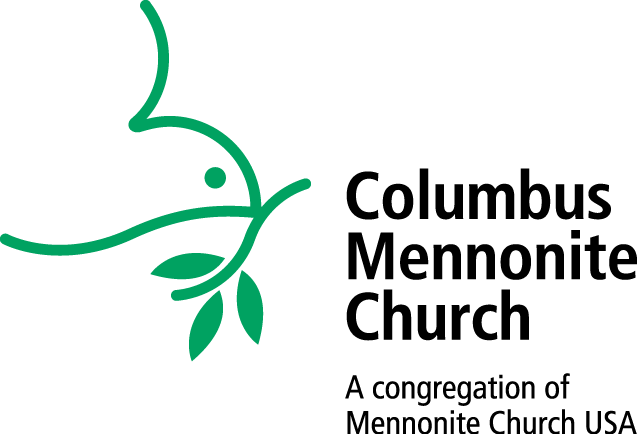Joyful the dark | December 22
Text: Luke 2:8-20
Speaker: Joel Miller
This is the season of darkness.
As a sometimes biker to church during the work week I’ve been aware of the increasing difficulty of getting back home in the evening before the darkness arrives. A strong headlight, blinking taillight, and reflective jacket gets added to the list of equipment necessary for safe travel. Not to mention a coat, cap, and multiple layers of gloves. The early onset darkness does make for a less crowded Olentangy Trail at 5:30pm.
The night from which we all just awoke held the longest darkness of the year. The winter solstice.
Less daylight can have real effects on our bodies. Cases of depression increase in the winter months. In general, energy levels run lower. It makes one consider that our animal cousins might be on to something with the whole hibernation thing. They get to both eat a lot of food at the end of the growing season and sleep through the cold and dark season. Trees pull their energy stores down into the ground where their roots hold the reserves, keeping vigil in the dark.
I recently saw a drawing with a vertical cross section of a winter scene. Above the ground is snow and a barren tree. Below the ground are the tree roots, a cavity with a bear hibernating, another with a groundhog. And a third underground cavity with a child curled up and reading a book. If not hibernation, then perhaps more of that inner child in these months. Permission to curl up and enter fresh worlds of thought.
Spiritual and theological language has overall not taken kindly to darkness, treating it mostly as a negative contrast to light. Like the verse in the opening statement of John’s gospel. “The light shines in the darkness, and the darkness did not overcome it.” …
At Hand, All Around | December 8
Texts: Isaiah 11:1-10; Matthew 3:1-11
Speaker: Mark Rupp
The end of the year and the beginning of the new year–whether you measure liturgically or by the 12-month calendar–is a time of looking back and looking forward. This past week, I was reminded that it was almost one year ago I decided that one of my new year’s resolutions was going to be getting more houseplants. Of course, “more” wasn’t hard when you start from zero, but on January 1, 2019, I walked out of Giant Eagle with a beautiful, fuschia-colored orchid.
Thus began a journey that has blossomed–pun intended–into, at last count, 27 different containers of plants. We only have one room in our house that gets adequate light and doesn’t allow access to meddling felines, so nearly all of those 27 plant-babies live in that one, southern-facing sun-filled room.
Lately I’ve taken to calling this room our sanctuary.
This sanctuary is also home to my desk, so the plants became my companions this week as I sat with the lectionary texts. Isaiah’s vision of a tender shoot springing forth from the stump was made even more vibrant as I looked around and could see new shoots and leaves springing forth around me. A spider plant that I brought home from the CMC plant sale recently put out a spiderette on a long, slender shoot that positioned itself in such a way so that it could peer over my shoulder while I work, offering silent commentary to my readings of the scriptures.
I am certainly still a novice when it comes to plants, but to my credit, none of them have been reduced to mere stumps so far; however, when I think about Isaiah’s vision, I can’t help but think of one of my plants in particular. When I mentioned to Sarah Werner about my resolution,…
Pulled toward | December 1
https://joelssermons.files.wordpress.com/2019/12/20191201sermon.mp3
Texts: Isaiah 2:2-4; Luke 1:26-38
Note: Please see the postscript after the sermon from CMC member and OSU Department of Physics Lecturer Rick Leonard. He goes into more depth about the workings of sailing, corrects some poor physics in the sermon, and suggests another possible route for semonizing.
Back in August we had a family vacation by Lake Michigan. One of those days we took a ride on the Friends Good Will – a replica 1810 top sail sloop. Or, in words that I understand, a really cool, pretty old, good sized, sailboat. The original boat played an important role in the War of 1812 on the Great Lakes. The Michigan Maritime Museum in South Haven offers this ride as a way of experiencing what it’s like to be on such a boat, complete with an experienced crew running the ship and giving full commentary along the way. The out and back trip on the lake took about 90 minutes.
On the way out, the wind was mostly at our backs and we were mostly occupied with looking around the boat and watching the crew work the ropes on the sails. As we made the turn and started heading back the crew seemed unfazed by the fact that we were now sailing into the wind, the very force that had just been pushing us in the opposite direction. I knew that sailing upwind was a thing, and had likely had it explained to me multiple times before, but I forgot how it worked. When it was our turn to hang out on the captain’s deck, I asked him to help me understand what was going on.
I remember two things from this explanation. The first is that the curve of the sail acts much like the curve of an airplane wing, creating…
Apocalypse update | November 24
Text: Luke 21:5-19
Speaker: Joel Miller
In Luke chapter 21 Jesus and his companions are walking the temple grounds in Jerusalem. The whole complex is an engineering marvel, a feat of mind and muscle. Some are awestruck by its beauty. They comment on the massive stones, dressed and stacked; the attention to detail; the overwhelming sense of power and permanence such structures evoke. Jesus, who was never very good at going with the flow of conversations, interjects: “As for these things that you see, the days will come when not one stone will be left upon another; all will be thrown down.”
These startling comments suddenly take center stage. “Teacher,” they ask, “when will this be, and what will be the sign that this is about to take place.”
After looking back for the last two weeks – first with All Saints/All Souls remembrance of Anabaptist history, then with Rabbi Jessica Shimberg reflecting in a similar way on Jewish history – invoking memory and lineage and tradition, we seem to be doing a 180. Having been told that the present order will soon collapse, we are suddenly turned toward the future. With the disciples, we want to know the timeline. “When will this be?” We want more clues about what to watch for. “What will be the sign that this is about to take place?”
This passage from Luke 21 is part of what is known as the “synoptic apocalypse.” Each of the three Synoptic Gospels – Matthew, Mark, and Luke — contain their own version of Jesus’ sobering words uttered in his final days. The Revised Common Lectionary, finalized in the mid 1980’s, decided to feature these passages at the end of every liturgical year, and the first Sunday of the new year when Advent begins – in two weeks. In a role befitting…
Evolving Torah: Viewing 21st C. Morality Through the Lens of Our Ancestors | November 10, 2019
Guest preacher: Rabbi Jessica Shimberg
This week, I had the blessing of reading Joel’s sermon from last Sunday and, in observance of All Souls Day, his reference to The Bloody Theater or Martyrs Mirror of the Defenseless Christians. As an American Jew in my 50s, my formative experience of Christians — as one of the only Jewish children in Upper Arlington in the 1970s and early ‘80s — didn’t allow me to see the nuanced variety of Christian experience. In my personal story, to be Christian was to be part of the dominant majority — safe, secure, culturally very dominant. Through my many experiences of exclusion (though none of them “bloody,” thank God!) and as the victim of antisemitic language and mythology, I was the stranger despite my citizenship and that of my parents and my grandparents as people born in the United States.
The opportunity Joel’s sermon provided to learn about Menno Simons and the persecution of the early Anabaptists/Mennonites at the hands of other Christians within central Europe was a window for me into, as Joel put it, “one of the central teachings of Menno and Anabaptists of his kind. That to be Christian is to embrace the nonviolent – or, as they would say, nonresistant – way of Jesus – the peacefulness spoken of in the Beatitudes. This eschewing of violence left these Christians ‘defenseless.’” Although this reaffirmed my deep affection for this church and you, it also saddened me a bit. Knowing that so many of us share an historical lens of persecution of “our people,” and a Scriptural lens that encourages and commands us to love and care for those who are most likely to be marginalized and persecuted in society, somehow feels like it should make it a “no brainer” that we would treat the stranger/sojourner…

